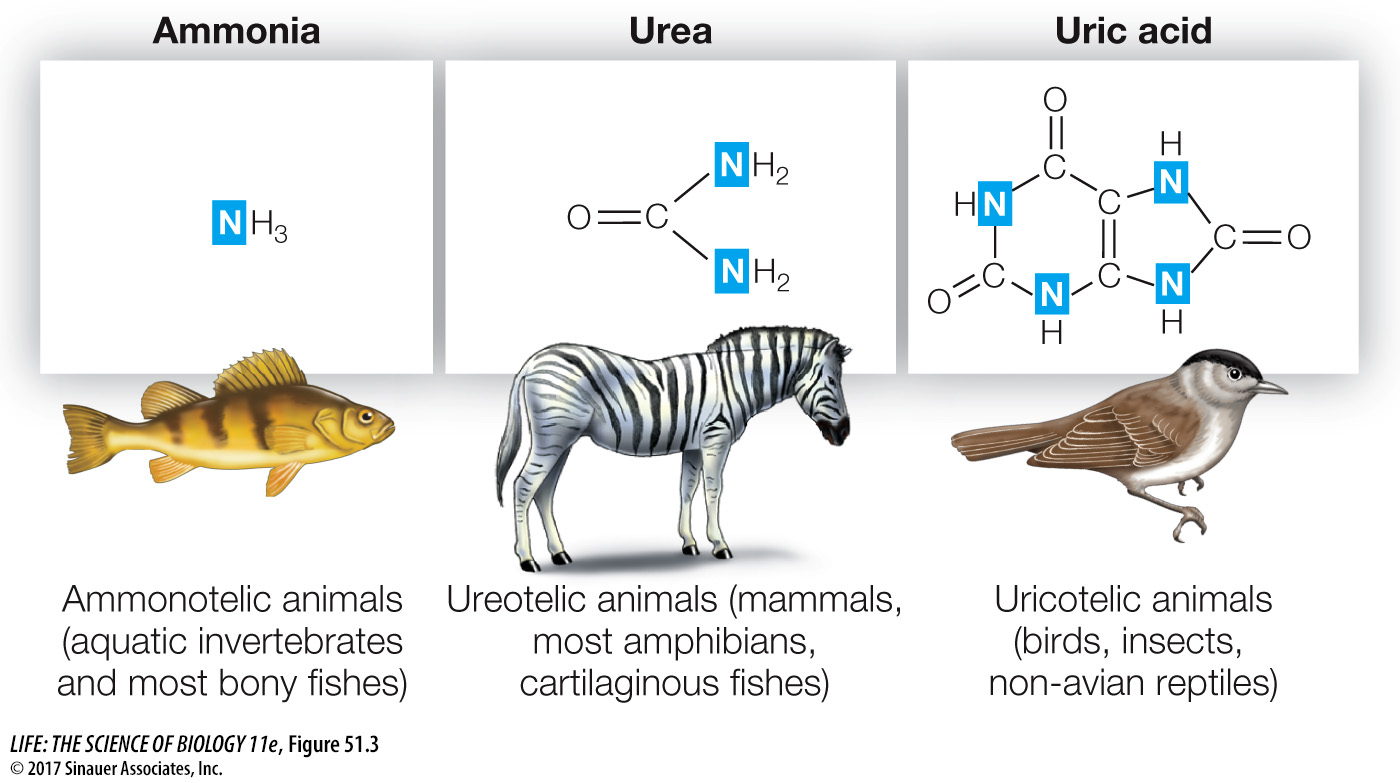Ammonia is toxic
The most common nitrogenous waste is ammonia (NH3). Because it is highly toxic, ammonia is either excreted continuously to prevent its accumulation or is detoxified by conversion into urea or uric acid (Figure 51.3). Ammonia is highly soluble in water and diffuses rapidly, so its continuous excretion is relatively simple for many aquatic animals that continuously lose ammonia from their blood to the environment by diffusion across their gill membranes. Animals that excrete ammonia, such as aquatic invertebrates and bony fishes, are called ammonotelic.

Figure 51.3 Nitrogenous Waste Products of Metabolism The metabolism of proteins and nucleic acids produces nitrogenous wastes. Many aquatic animals, including most fishes, excrete nitrogenous wastes as ammonia, which is highly diffusible and soluble in an aqueous environment. Most terrestrial animals and some aquatic animals excrete either urea or uric acid. Urea is more soluble in water and is the major nitrogenous excretory product for mammals, amphibians, and some fishes. Uric acid is not very soluble in water and is the major nitrogenous excretory product for reptiles (including birds), insects, and some amphibians.
Ammonia can also be lost by diffusion across the alveolar membranes of air-breathing animals, but with tidal ventilation, the buildup of ammonia in the extracellular fluids would be greater and therefore toxic. Therefore these animals detoxify ammonia by converting it into urea or uric acid.
